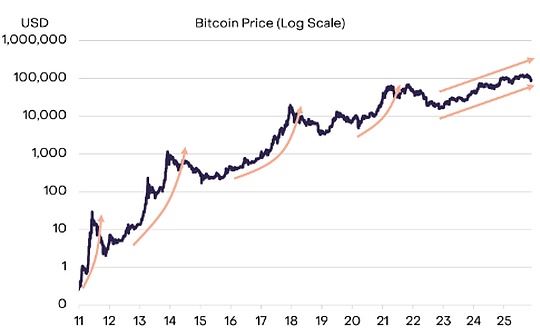
source:GeekCartel
The entrepreneurs who have been moving forward have not stopped moving forward, and they are constantly exploring new solutions and application scenarios.With the advancement of technology, Bitcoin’s liquidity is gradually improving.GeekCartel aims to lead everyone to understand the development and technical principles of these projects and observe the latest developments from a more comprehensive perspective, helping users better utilize Bitcoin assets and explore more applications.Scene.
1. Introduction
Since Satoshi Nakamoto released the Bitcoin white paper in 2009, Bitcoin has been known as “digital gold” and has an unshakable position in the cryptocurrency field.Its decentralization, scarcity and security enhance its appeal as a long-term store of value.
In contrast, since its launch in 2015, Ethereum has quickly become another important pillar of the blockchain industry with its powerful smart contract platform and flexible development environment.Ethereum’s smart contract capabilities provide unlimited possibilities for the development of decentralized applications (dApps), allowing it to achieve significant achievements in the fields of decentralized finance (DeFi) and non-fungible tokens (NFT).
Although Bitcoin occupies an important position in the crypto world, the Bitcoin ecosystem still faces some unique challenges compared to Ethereum:
-
Lack of smart contract platform:The lack of a powerful smart contract platform in the Bitcoin ecosystem limits the development of complex dApps and DeFi.
-
Inadequate utilization of assets:A major challenge for many Bitcoin holders is that their assets are underutilized, resulting in missing opportunities to profit in emerging industries such as DeFi and NFT.
-
The fragmentation problem of BTC in various blockchain networks:Bitcoin is scattered in multiple independent blockchain networks and layer two solutions, which may lack effective interoperability and compatibility between these networks, thus limiting the application and liquidity of Bitcoin.
Although Bitcoin’s original design is relatively simple, its community and developers continue to drive technological innovation to enhance its functionality and usability.Among them, SegWit update solves transaction extension problems and increases block capacity by separating transaction information and signing information; Taproot update introduces Schnorr signature technology, which improves transaction privacy and efficiency, and provides the development of on-chain smart contracts.Lay the foundation; the BRC-20 standard enables the Bitcoin network to support the creation and transaction of tokenized assets, expands its application scenarios and enhances its competitiveness in decentralized finance and other blockchain applications, for BitThe financial application scenarios of coins provide potential and foundation.
The entrepreneurs who have been moving forward have not stopped moving forward, and they are constantly exploring new solutions and application scenarios.With the advancement of technology, Bitcoin’s liquidity is gradually improving.GeekCartel aims to lead everyone to understand the development and technical principles of these projects and observe the latest developments from a more comprehensive perspective, helping users better utilize Bitcoin assets and explore more applications.Scene.Note: This article does not constitute investment advice.
2. Exploration of Bitcoin Liquidity: A New Path to Improve Application and Value
Babylon: Bringing Bitcoin security into the Pos ecosystem
Technical implementation:
Babylon is a Layer 1 PoS chain developed based on the Cosmos SDK.Babylon proposed the Bitcoin staking protocol, which is designed as a modular plug-in for many different PoS consensus algorithms, providing a primitive for the restaking protocol.
Babylon is able to pass the security of Bitcoin to all the numerous PoS chains (such as Cosmos, Binance Smart Chain, Polkadot, Polygon and other blockchains that already have a strong, interoperable ecosystem) to create a stronger and unified ecosystem..
Babylon realizes secure sharing of Bitcoin through the Bitcoin timestamp protocol and the Bitcoin staking protocol.
Bitcoin Timestamp Protocol: Babylon uses Bitcoin’s timestamp technology to enhance the security of the PoS protocol by sending the hash value of the PoS block and its verifier signature to the Bitcoin blockchain.This process includes the following key steps:
-
Checkpointing:At the end of each epoch, honest validators sign the hash of the last PoS block of the period and submit this hash and their signature to the Bitcoin network as checkpoints.Because the Bitcoin blockchain has immutability and chronological characteristics, these checkpoints provide an immutable proof of time.
-
Punishment mechanism (Slashing):If a validator’s behavior is judged to be malicious (for example, a conflicting block signed), then their staked funds will be cut.The checkpoints on the Bitcoin blockchain provide a timely evidence to support this cut, proving that malicious behavior has indeed occurred before a certain time.
The Bitcoin timestamp protocol can also solve PoS long-range attacks.Long-distance attack refers to the possibility of starting a forked chain by utilizing the verification nodes in the PoS chain after destaking, returning to a historical block where they are still stakers.This problem is inherent in PoS systems and cannot be completely solved by improving the consensus mechanism of PoS chains itself. Both PoS chains such as Ethereum and Cosmos face this challenge.
By introducing Bitcoin timestamps, the on-chain data of the PoS chain will be stored on the Bitcoin chain in the form of a Bitcoin timestamp. Even if someone wants to create a PoS chain fork, its corresponding Bitcoin timestamp will definitelyLater than the original chain, so long-distance attacks will be invalid at this time.
Bitcoin staking protocol:The protocol allows Bitcoin holders to stake their idle Bitcoins to improve the security of the PoS chain and gain profits in the process.
The core infrastructure of the Bitcoin staking protocol is the Control Plane between Bitcoin and the PoS chain, as shown in the figure below.
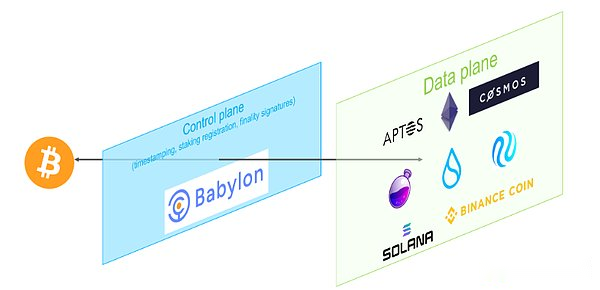
Figure 1: System architecture with Control plane and Data plane Source: Bitcoin staking agreement white paper
Control Plane is implemented in chain form to ensure it is decentralized, secure, censor-resistant and scalable, Data Plane stands for PoS chains, a control plane responsible for a variety of key functions including:
-
Provides Bitcoin timestamp services for PoS chains to enable them to synchronize with the Bitcoin network.
-
Act as a market, match Bitcoin stakes and PoS chains, and track staking and verification information such as EOTS key registration and refresh;
-
Record the final signature of the PoS chain;
Babylon uses advanced cryptography techniques such as one-time extraction signature (EOTS), to convert cutable PoS attacks into Bitcoin UTXOs that can be used for destruction.
EOTS is a special digital signature scheme, and if you sign different blocks at the same height, it will lead to key leakage.The Bitcoin network uses the UTXO model to track transactions and account balances.Each UTXO represents a certain number of Bitcoins at an address in the Bitcoin network, which can be dominated by the private key holder of that address.
When PoS validators stake Bitcoin to participate in the consensus process of the network, their staking behavior is locked in a specific UTXO.By using EOTS, ensure that when a validator violates the protocol (such as signing two different blocks at the same height), their private keys will be leaked.Once the private key is leaked, this private key can sign a transaction that sends the original pledged bitcoin to a burned address.In this way, the verifier of the violation will be financially punished for his dishonest behavior.
In summary, Babylon is a Layer 1 blockchain that passes Bitcoin security to numerous PoS chains through Bitcoin timestamps and Bitcoin staking protocols, enhancing the security of these chains and making BitcoinThe holder provides profit opportunities.Its unique staking scheme allows Bitcoin holders to stake BTC without bridging.However, as staking BTCs are locked in smart contracts, these BTCs will appear in unspent state in UTXO, which may lead to a decrease in transaction processing speed and increase in transaction fees as the staking volume increases. This is what Babylon facesone of the main challenges.
Project Progress:
Babylon is still in the test network stage and officially announced that it will cooperate with Ankr, Lorenzo protocol, B² Network, Nubit, Yala, Nomic, Automata, Glacier, Solv and other projects that are at the forefront of the Bitcoin revolution.
According to official data, Babylon has integrated with 50 Cosmos chains through the IBC protocol, covering areas such as DeFi, gaming and infrastructure.
Investment information:
On December 6, 2023, Babylon received a US$18 million Series A financing led by Polychain Capital and Hack VC. Other participating institutions include: Framework Venture, Breyer Capital, Symbolic and GeekCartel.
In February 2024, Binance Labs announced that it would invest in Babylon, with the investment amount not disclosed.
On May 30, 2024, Babylon announced the completion of a new round of financing, with the financing amount reaching 70 million, led by Paradigm.
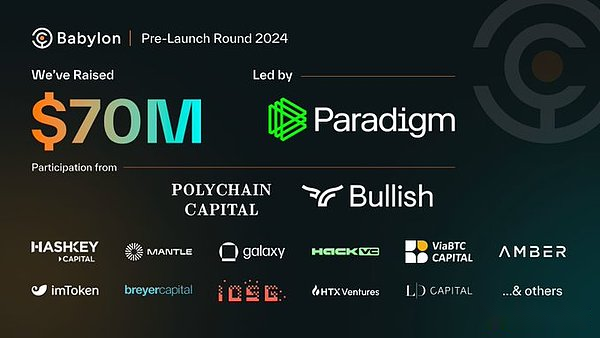
Picture 2: Baylon's latest financing situation Source: Official Twitter
BounceBit: The way to integrate DeFi and CeFi
Technical implementation:
The BounceBit Chain is a PoS Layer 1 guaranteed by a validator staked BTC and its native tokens – a dual token system (native tokens BB and BTC) that leverages native Bitcoin security, with full EVM compatibility.
The verifier pledges BB or BBTC to record and verify transactions on the network, and receives transaction fees as a pledge reward.And there is no requirement for the minimum number of tokens held.This dual-token system not only expands the stakeholder base, but also adds an additional layer of resilience and security to the consensus mechanism of the network.
BounceBit also supports interoperability of chains compatible with EVMs, identifying and merging equity assets such as BTCB and ERC20 token WBTC on BNB chains.This diversifies BTC’s use cases and increases user engagement.
BounceBit introduces a unique feature – generating benefits from CeFi and DeFi in parallel.Users can use liquid staking derivatives (LSD) for BTC staking and on-chain mining while obtaining original CeFi income. This process is called Bitcoin’s Restaking.The ecosystem provides Bitcoin holders with three types of benefits: CeFi earnings, node operation rewards for staking BTC on the BounceBit chain, and opportunity gains for participating in on-chain applications and Bounce Launchpad.
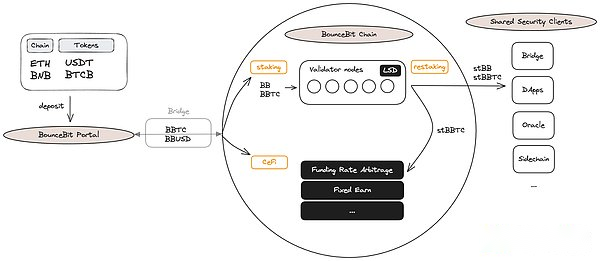
Figure 3: User process, source: BounceBit Docs
As shown in Figure 3, the user deposits various tokens into BounceBit Portal and converts them into LCT (BBTC or BBUSD).By bridging these LCTs (mobile custodial tokens) to participate in CeFi income on the BounceBit chain, you can also stake BB or BBTC to the verification node and obtain stBB or stBBTC as LSD. These tokens can be restaked and enhancedNetwork security.
BounceBit introduced the concept of “Liquid Custody”, which theoretically ensures that assets are stored safely, keeps collateralized assets liquid, and provides more opportunities to obtain profits.As in the above process, when users deposit assets into BounceBit, they will receive a (LCT)-BB or BBTC, which represents that their assets can be bridged to BounceBit while being securely custodian and used in supported scenarios, to get more profits.
BounceBit allows staking validators to participate in network security and consensus mechanisms to help ensure network stability and security.
-
Shared security and consensus:Inspired by Restaking’s shared security model, BounceBit’s BTC bridge implements a system where validators jointly maintain and protect cross-chain bridges.This cooperation method allocates security responsibilities and enhances the reliability of cross-chain transactions.
-
More than 50% of the transactions approved:To verify and execute any cross-chain transactions, more than 50% of validators are required to approve it.This consensus mechanism ensures that each transaction has been carefully reviewed and recognized by validators across the network, adding an additional layer of security and trust to the bridging process.
-
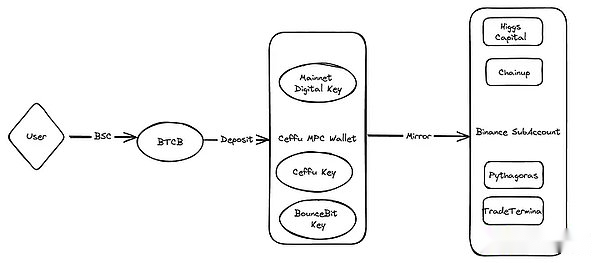
Figure 4: CeFi integration process Source: BounceBit Medium
Through the innovative CeFi + DeFi framework, BounceBit empowers BTC holders with the ability to earn benefits across multiple networks.Unlike many protocols that emphasize decentralization, when Bitcoin is stored in a multi-sign wallet, it cannot generate returns (decentralized protocols usually have complex revenue generation mechanisms built-in, which require assets to run in smart contracts, and bitsThe smart contract capability of coins is limited).BounceBit solves this problem by integrating the CeFi model, leveraging Mainnet Digital’s hosting service, supplemented by Ceffu’s MirrorX technology, allowing BTC to be active on-chain or traded with credit in CEX sub-accounts.
As shown in Figure 4, the user interacts with BSC (BNB Smart Chain) and deposits BTCB into the Ceffu Multi-Party Computing (MPC) wallet.In MPC, a given number of participants each holds a piece of private data.Participants can work together to calculate the value of the public function on the private data while keeping their own data confidential.This wallet uses multiple keys to ensure the security of transactions, including: mainnet digital key, Ceffu key and BounceBit key.Finally mapped to the Binance sub-account, this part of the components (Higgs Capital, Chainup, Python, TradeTerminal) supports different needs of the sub-account.
To sum up, BounceBit is a PoS Layer 1 network that supports Bitcoin restaking, integrating CeFi and DeFi models, providing auctions, DEX and other financial services, allowing Bitcoin holders to earn profits on multiple networks.It is fully EVM compatible, supports interoperability with other EVM chains, and safely transfers and maps BTC through its bridging system.BounceBit also, however, this combination of CeFi and DeFi may face security challenges, especially in the security mechanism of cross-chain bridges and the management of multi-sign wallets, which requires maintaining a high degree of security and stability and ensuring the security of funds and transactions..
Project Progress:
According to the latest official report: on May 13, Mainnet launch, its on-chain TVL has reached 882 million, with nearly 400,000 early contributors.As of the time of writing, according to official information, the total number of BBTC tokens bridged through BounceBit was 1,482, the number of users holding BBTC was 155,583, and the staking (LSD) reached 5,099 BBTC.
BounceBit recently announced a partnership with Ethena where users can participate in BounceBit and Ethena’s activities by pledging $BBUSD.Cooperate with Nubit to improve data integrity and data capacity; in addition, the official has reached cooperation with LayerZero Labs, USDX, zkLink Nova, Pell Network, Free, etc.
Investment information:
BounceBit raised $6 million in seed rounds this February, led by Breyer Capital and Blockchain Capital.And in March and April, they received strategic financing from OKX Ventures and Binance Labs respectively.

Figure 5: Investment institutions that support BounceBit Source: BounceBit Official Website
Solv: Release SolvBTC power and open the door to BTCFi
Technical implementation:
Solv Protocol launches SolvBTC, a groundbreaking full-chain earnings Bitcoin asset.Developed within a secure asset management framework, SolvBTC unlocks new possibilities and opportunities for Bitcoin holders while creating an efficient BTCFi ecosystem.
As a unified liquidity entrance, Solv integrates various liquidity resources and investment opportunities into one platform.Users do not need to access multiple different platforms or protocols to find and manage their investments on Solv Protocol.By converting idle underlying assets into interest-generating assets and promoting cross-protocol and cross-ecology Lego combinations, Solv will stimulate the liquidity vitality of the entire network and create an efficient liquidity distribution layer.
Taking SolvBTC as an example, as shown in Figure 6, the user side can use BTC and BTC-related assets (such as wBTC, BTBC, MBTC, etc.) through the DeFi protocol of the application layer (such as DEX-decentralized exchange, stablecoins, lending, etc.) Tokenize pledge, re-stake and DeFi transaction income.Merlin, Stacks, Botanix, Bitlayer, etc., are infrastructure platforms and chains that support SolvBTC operations.They provide SolvBTC with the necessary technical support and ecosystem connectivity to ensure that SolvBTC can run smoothly on a variety of blockchains and protocols.
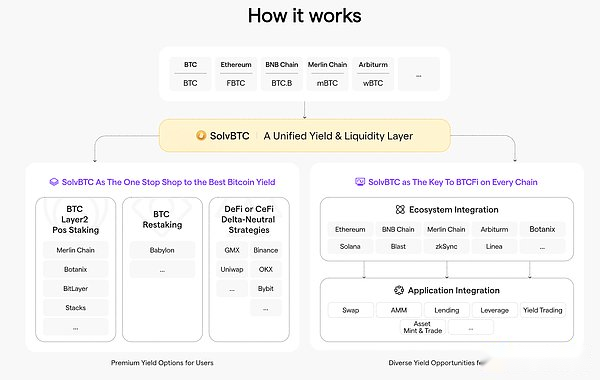
Figure 6: Solv architecture Source: Official Medium
In addition, SolvBTC is fully integrated with DeFi and CeFi projects across various ecosystems, enabling users to explore new growth paths and maximize their revenue potential.This integration brings Bitcoin liquidity to various DeFi protocols to promote the prosperity of BTCFi.SolvBTC has also become a unified liquidity portal for BTCFi.
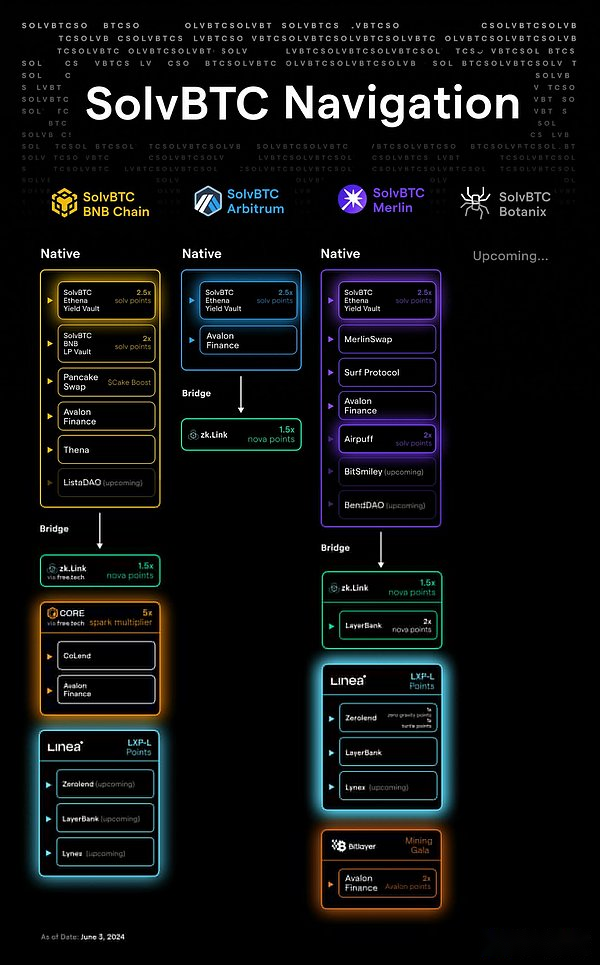
Figure 7: SolvBTC navigation map Source: Official Twitter
Solv implements a decentralized asset management architecture, which also includes the built-in Solv Guard and oracle.By leveraging smart contracts, Solv has established a trustless process standard that prioritizes the security of assets and provides users with a high-quality revenue stream.
Solv Guard is a customized system with unique operating mechanisms and specialized permissions based on the trading strategies of each Vault.It defines rules regarding the transfer destination and DeFi protocol operation.
Only secure wallet multi-signatures are allowed to operate within the specified range.
Smart contract upgrades need to be jointly controlled by using multi-signature addresses and time locking mechanisms (TimeLocks) with reputable partners.Additionally, if the strategy involves operating on a centralized exchange, Solv will work with on-chain custodians such as Ceffu and Copper to ensure the security of off-exchange funds settlement.
By granting governance permissions based on the use rights of multiple signatures of the secure wallet, the separation of governance rights and user rights is achieved.This separation allows future configuring parameters and upgrading contracts by changing the governance structure.
Trading Strategy Vault:Store funds and provide liquidity and perform fund allocation.Its core design concept is to eliminate counterparty risks while ensuring the efficiency of funds (counterparty risks refer to the risk of the other party failing to fulfill its financial obligations during the transaction process. Here, transactions are automatically executed through smart contracts without relying on a single one.The intermediary or the other party performs the contract, thereby reducing the risk of the counterparty).
-
In this Vault, investment and repayment operations are achieved by maintaining Delta-Netural Strategies in the portfolio.
-
Vault uses Solv Guard maintenance and real-time price oracles to ensure operational security and decisions that rely on current market data.
To sum up, Solv launched SolvBTC, an innovative full-chain earnings Bitcoin asset designed to provide new opportunities and possibilities for Bitcoin holders while creating an efficient BTCFi ecosystem.SolvBTC integrates various liquidity resources and investment opportunities into one platform through a unified liquidity portal, allowing users to easily find and manage investments on Solv Protocol.The Solv architecture includes decentralized asset management mechanisms such as Solv Guard and oracle, and cooperates with multiple infrastructure suppliers to ensure the safe and efficient operation of the system.In addition to SolvBTC, the official also provides a variety of assets and investment strategies.Despite the use of security measures such as multi-signature and other mechanisms, the risk of vulnerabilities or attacks in the smart contract itself still exists, which may lead to the loss or theft of assets.To this end, Solv actively cooperates with well-known auditing companies to minimize this risk.
Project Progress:
SolvBTC has supported Bitcoin assets of BNB Chain, Merlin, Arbitrum and Bitcoin mainnets, and will soon support the Ethereum mainnet.The official announced that it will integrate the robust strategic returns of sUSDe into SolvBTC.ena through cooperation with the Ethena team, and will also cooperate with Babylon and BotanixLabs.On June 6, Binance Web3 launched a Solv staking reward activity, where users can earn rewards by pledging BTCB for SolvBTC.
As of writing, Solv has achieved more than $1.2 billion in TVL, providing high-quality revenue to more than 100,000 users; 17,490 BTC has been pledged on Sovl.
Investment information:
Solv has received investments including Binance Labs, Blockchain Capital, Mirana.
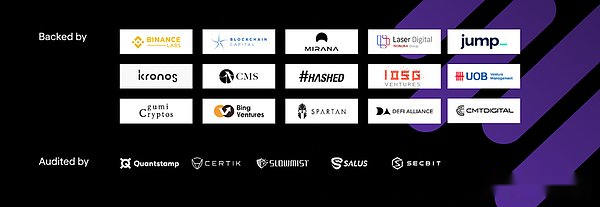
Figure 8: Investment institutions that support Solv Source: Official Document
Lorenzo: Bitcoin liquidity finance layer
Technical implementation:
LorenzoProvides an efficient market for Bitcoin holders, allowing them to easily find the best investment opportunities.
Lorenzo incentivizes users to participate in staking and provides income by converting the staking tokens into liquid principal tokens (Liquid Principal Tokens – LPTs) and earnings accumulation tokens (Yield Accruing Tokens – YATs).In addition, Lorenzo also provides the trading infrastructure for LPT and YAT, ensuring that users can easily manage and exchange their tokens, thereby maximizing their investment returns.
-
Liquidity Principal Tokens (LPTs):LPTs are the tokens of the principal of Bitcoin that represent pledged.Taking Babylon in Figure 9 as an example, for example, Babylon-Lorenzo-01 is a Bitcoin liquidity re-staking plan (BLRP). When users pledge Bitcoin to Babylon-Lorenzo-01, they will receive a 1:1 redemption.As LPT, users can buy or sell these LPTs on the Lorenzo platform, making staking Bitcoin more liquid and operational.
-
Revenue accumulation Tokens (YATs):YATs are tokens representing the accumulated income from re-staking transactions.Taking Babylon-Lorenzo-01 as an example, YAT will earn profits from Babylon and Lorenzo when it expires, and YATs can also be bought, sold or managed on the Lorenzo platform, allowing users to cash out or reinvest their income.
Before Babylon appeared, BTC assets were distributed on various public chains.The emergence of Babylon has pledged these BTC assets in a centralized manner and released stBTC as liquid staking tokens to enter various ecosystems.Support for stBTC by various ecosystems will affect the new BTC distribution pattern.Lorenzo will become the traffic distribution portal for BTC, with the principal stBTC as the liquidity layer, and YAT assumes the financial part to build a Pendle-like interest rate market and provide users with return on investment.
BLRP is a program used to acquire Bitcoin liquidity on the Lorenzo platform.Through BLRP, the project party can use the pledged Bitcoin liquidity, and the stakeholder will then receive a reward for profit.The creator of each BLRP needs to clearly state how the staked Bitcoin liquidity will be used, the issuance rules for the Bitcoin re-staked tokens, and how the staked person will receive rewards.
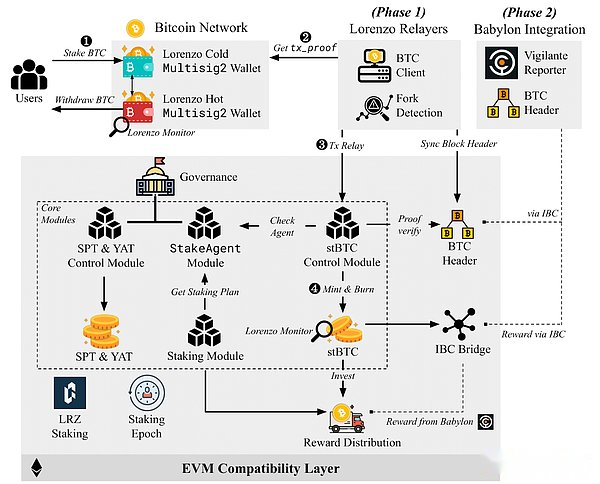
Figure 9: The architecture of the Lorenzo protocol. Source: Official Document
According to Figure 9, we can see that the following settings are mainly in the Lorenzo protocol architecture:
-
Users pledge and retrieve Bitcoins
-
Pledge BTC: Users pledge Bitcoin to Lorenzo’s multi-signal cold wallet.
-
Retrieve BTC: Users can retrieve their Bitcoins through Lorenzo Multi-Sign Up Hot Wallet.
-
Lorenzo Relayers
-
Get the proof of transaction: Lorenzo Relayers get the proof of transaction (tx_proof) in the Bitcoin network.
-
Fork Detection: The repeater is also responsible for detecting the fork situation of the Bitcoin blockchain to ensure the consistency and reliability of the data.
-
stBTC Control Module
-
Responsible for the casting and destruction of stBTC and conducting proof and verification (Proof Verify).
-
Core Modules
-
Staking Agent module: manage the staking plan and check the agent.
-
stBTC control module: responsible for the casting and destruction of stBTC and conduct proof verification.
-
SPT & YAT control module: manages and controls the issuance and transaction of LPTs and YATs.
-
Staking Module: Obtain and manage pledge plans and coordinate pledge operations.
When a user pledges Bitcoin to a target on the Lorenzo platform (such as a specific investment plan or project), the pledge agent needs to complete the following process:
-
Complete re-pled: The pledge agent needs to pledge the user’s Bitcoin to the specified project in a timely manner.
-
Upload the re-pled certificate: The pledge agent needs to upload the proof of the re-pled operation to the Lorenzo platform to ensure the transparency and credibility of the transaction.
-
Issuing tokens: The staking agent issues LPTs and YATs on the Lorenzo platform for each restaking transaction according to the rules defined by the subject matter.
-
Transfer tokens: The staking agent transfers generated LPTs and YATs to the address of the staking user, enabling the user to manage and trade these tokens.
Lorenzo can not only handle users’ Bitcoin stakes as a staking agent, but also supervise the behavior of other staking agents.If there are any violations of the pledge agent, Lorenzo will intervene and take measures to ensure that the pledge agent’s behavior complies with the regulations.
Through the above, we can see that Lorenzo designs some of its functions as a modular architecture for scalability.According to official information, Lorenzo supports Babylon, through IBC bridge and proof verification mechanism,Lorenzo brings Bitcoin liquidity into multiple blockchain ecosystems (and will be connected to other chains in the future), enhancing the flexibility and application scenarios of Bitcoin staking.Lorenzo is also EVM-compatible, enabling it to run Ethereum smart contracts, provide LPT and YAT transaction infrastructure (such as providing transaction pairs, lending protocols and Bitcoin earning products with different structures), and promote diversified DeFi application development.As an innovative Bitcoin LPT and YAT market, if Lorenzo encounters insufficient liquidity or excessive market fluctuations, it needs to try its best to increase platform user participation and trading volume to enhance overall market liquidity.
Project Progress:
The Lorenzo beta moderator network will be launched on May 26. Users can try to use Lorenzo to bridge stBTC to the Bitlayer ecosystem.
According to official information, the cooperation and integration projects announced in the first quarter include: Babylon, Cosmos Hub, BounceBit, Flash Protocol, Nubit; recently reached cooperation with Bitlayer, Portal Finance, enzo, BitSmiley, etc.
Yala: Implementing Bitcoin native DeFi protocol for multi-chain stablecoins
Technical implementation:
Yala’s innovation lies in bringing Bitcoin liquidity to various ecosystems, allowing BTC users to gain profits through stablecoins., the protocol aims to leverage the security and liquidity inherent in Bitcoin.Leveraging Yala’s modular infrastructure to provide loan agreements, enabling users to lend over-solidated stablecoins ($YU) by depositing BTC or UTXO assets.Users can use $YU stablecoin to generate revenue through various DeFi protocols in the ecosystem.The Yala Finance system has basic components such as Vaults, clearing algorithms, automatic stabilizers and insurance modules, providing a comprehensive DeFi ecosystem for BTC assets.
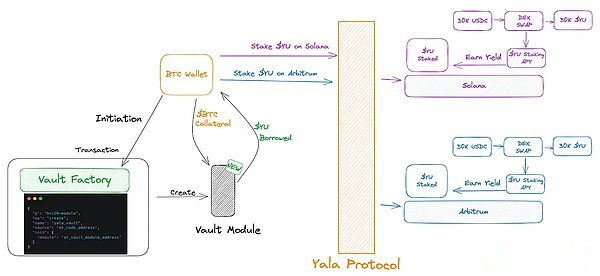
Figure 10: $YU spans different ecosystems Source: Yala Medium
As shown in Figure 10, Yala makes investments more flexible and active by mixing different DeFi protocols and multiple blockchains (Solana, Arbitrum, and BTC L2, such as Botanix).Users can choose to spread their investments into different activities such as staking, liquidity mining and lending across a variety of ecosystems.This user-oriented approach allows leveraging the unique advantages of each activity and blockchain to help users build a diverse and strong portfolio.
The Yala architecture includes an application layer, a consensus and data availability (DA) layer, an execution layer, and a settlement layer.Based on this design, developers can use Yala’s SDK to implement customized modules to develop BTC ecological applications.
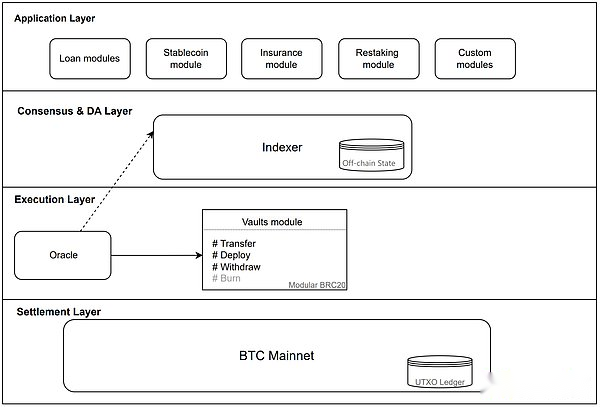
Figure 11: Yala's modular architecture Source: Official Document
Application layer:The application layer is where the application runs, and the modules on it define the logic for state changes.The module can be a smart contract on the destination blockchain virtual machine, such as a smart contract in the EVM, or a Tapscript in the Inscrption Assets.Through this module, the ultimate Yala stablecoin original ecosystem can generate additional benefits across various DeFi protocols and blockchains in multiple ecosystems.Yala’s application layer includes loan modules, re-staking modules, insurance modules, stablecoin modules and custom modules.
The stablecoin module forms the basis of the Yala financial system. Stablecoins are multi-chain and are native to each target chain.For example, since BRC-20 tokens cannot be directly minted, the system maintains a stablecoin reserve pool, namely the stablecoin module.Users simulate the minting/destruction process of traditional stablecoins by transferring and extracting inscriptions to the stablecoin issuance module (in the initial stage, the Yala Foundation, as a community-supervised central entity, is responsible for ensuring the stability of $YU; Governance Foundationwill be transformed into a decentralized autonomous organization (DAO) to ensure sustainable development and wider community participation).
Consensus and data availability layer:In the Yala system, DeFi transactions are carried out on the target chain, and data is updated and consensus through the indexer node. The final state changes will be reflected on the Bitcoin main chain through UTXO transactions to ensure data security.and consistency.
Data availability refers to the ability of data stored in a blockchain network to be effectively accessed and used by all participating nodes.Unlike data availability in other blockchains, BTC assets are in UTXO format, containing two state changes (input and output), and BTC has a longer block interval of about 10 minutes.
The implementation of data availability in Yala only needs to be maintained by the indexer for off-chain state changes in the witness script format.The indexer captures global state and balance in the form of Witness Script, a extended script introduced in Isolation Witness (SegWit) is an aim to improve the efficiency of Bitcoin transactions andsecurity).Changes in off-chain state will eventually be reflected in the on-chain UTXO transfer transactions. BTC’s consensus mechanism and security verifies these on-chain UTXO transactions, thereby indirectly ensuring the reliability and consistency of off-chain state changes.In addition, Yala cooperates with DA provider Nubit, which provides status verification of bitcoin indexer.Based on the above design, Yala’s challenge is to achieve real-time updates of Indexer’s credibility and off-chain state.In this regard, Yala proposed some future development directions and solutions:
Implement the credibility of Indexer:
-
Data sampling: In the DA layer, data availability sampling (DAS) is used directly to reduce verification costs; the verifier only needs to download some data blocks randomly to verify the availability of all data.Elimination encoding and KZG polynomial commitment will also be used to implement DAS in the Yala DA layer.
-
Content verification: The content that Yala’s DA layer needs to verify includes transaction data, Merkle tree of transaction data and Commitments.The transaction data will be directly verified by Indexer, and Indexer will also generate a Merkle tree.Currently, the commitment can also be generated by Indexer, and the official said that the addition of specialized validators may be considered in the future.Verification content will be stored in a distributed manner and will be published for a period of time (refer to the blob storage time on ETH, set to one month), during which anyone can verify the verification content.
-
DA layer solution using Nubit: Nubit is a Bitcoin native data availability layer with instant endurance.Yala is working with Nubit, the Data Availability (DA) layer, to build the indexer.With Nubit’s data availability layer, Yala’s indexer enables deeper and more reliable verification of Inscription Assets events.
Execution layer:
The execution layer includes BTC Vaults and Oracle module modules.
-
Oracle module: The lending agreement requires real-time acquisition of the market price of the collateralized assets to determine when the condition is triggered to execute.The Yala Foundation is responsible for maintaining Oracle modules and Oracle Security Modules (OSMs).Oracle modules get price input from off-chain sources.The off-chain Oracle node retrieves the required data through the off-chain data API, formats it and returns it to the Oracle module.To prevent attackers from trying to control most Oracles, the Yala protocol uses OSM to receive price inputs instead of receiving them directly from Oracle.OSM acts as the defense layer between Oracle and the protocol, with a 30-minute delay when releasing prices to enable emergency defense when Oracle is damaged.The Yala Foundation is responsible for making the duration of emergency Oracle and price delays.
-
BTC Defi module: All DeFi transaction operations in Yala use Indexer (consensus layer) – guide the state changes of the Defi module based on Oracle’s price information.
Yala innovatively designed a modular architecture to implement Bitcoin’s native DeFi protocol.Yala’s stablecoins support multi-chain and are native on target chains, allowing users to gain additional benefits over various DeFi protocols across multiple ecosystems through $YU.In addition, the off-chain transaction status is maintained through the consensus layer indexer and reflected to the UTXO on the chain, while verifying transactions with the help of Bitcoin’s consensus mechanism.However, Yala’s Indexer credibility and secure real-time update of off-chain data still face challenges, and Yala is actively exploring specific promotion plans.At present, using Polyhedra’s zkbridge information verification, we help Yala to do multi-chain verification functions in the bitcoin and EVM ecosystem to ensure the security of DeFi.In addition, using Nubit DA to help verify the inscription information of the Bitcoin ecosystem.For this innovative project from zero to one, to one million, the Yala team actively explores and pursues the defi project with enthusiasm for security technology. In the future, we are expected to witness the further improvement and optimization of this system.
Project Progress:
Yala officially announced its cooperation with Alchemy Pay, Avail, Babylon, Botanix, Map protocol, Nubit, Polyhedra and Stacks.
According to official information, the development team is still continuing to improve Yala’s infrastructure.
3. Project comparison
This article summarizes several Bitcoin liquidity-related projects, including Babylon, BounceBit, Solv, Lorenzo and Yala, aiming to help everyone better understand these projects.Next, we will conduct a comparative analysis of these projects to provide you with a more objective perspective.
|
name |
Babylon |
BounceBit |
Solv |
Lorenzo |
Yala |
|
Project core |
Bring Bitcoin security to PoS chains |
CeFi+DeFi combined to activate Bitcoin liquidity |
Bringing Bitcoin liquidity to various DeFi protocols through SolvBTC |
Provide Bitcoin’s LPTs and YATs trading market; optimize user income |
Implementing Bitcoin native DeFi protocol for multi-chain stablecoins |
|
Technology implementation |
Share Bitcoin security through Bitcoin timestamp protocol and Bitcoin staking protocol |
Verifiers jointly maintain cross-chain bridges, Mainnet Digital’s hosting services, supplemented by Ceffu’s MirrorX technology |
Integrate various liquidity resources and investment opportunities into one platform ; Trading Strategy Vaut Execute investment strategy |
Modular design, SPT & YAT control module manages and controls the issuance and transaction of LPTs and YATs; pledge agency supervision mechanism |
Modular design, minting multi-chain native stablecoins through stablecoin modules, supporting multiple DeFi protocols |
|
Supported chains |
Bitcoin, Cosmos, Binance Smart Chain, Polkadot, Polygon, etc.; EVM compatible |
Bitcoin, BNB chain, Ethereum, etc.; EVM compatible |
Bitcoin, Merlin, Arbitrum, BNB Chain, etc.; EVM compatible |
Bitcoin, Babylon, BitLayer, will support other chains in the future; EVM compatible |
Bitcoin, Ethereum, Solana, Arbitrum, etc.; EVM compatible |
|
Security mechanism |
Checkpoint and punishment mechanism based on Bitcoin timestamps; one-time extracted signature (EOTS) for PoS attacks |
Verifier approved (>50%) cross-chain transactions; Ceffu multi-party signature wallet |
Safe Guardian trading rules, multi-signature and time lock control smart contract upgrades |
Multi-signature wallet, proof verification, fork detection; pledge agent supervision mechanism |
Consensus and data availability are achieved through Indexer (off-chain) and on-chain verification is realized through UTXO |
As can be seen from the table, although each project focuses differently, these projects are committed to promoting liquidity in Bitcoin.Through their own unique technical solutions, users can exert greater economic value to their Bitcoins.This not only helps users obtain profits through different methods, but also greatly improves the liquidity and breadth of Bitcoin as a digital asset.
IV. Summary and Outlook
More and more projects are emerging in order to improve the liquidity efficiency of Bitcoin. They not only improve the liquidity of Bitcoin, but also broaden their applications in the field of decentralized financial technology.These projects have greatly promoted the development of the Bitcoin ecosystem by providing innovative solutions and convenient transaction capabilities.
The passage of Bitcoin ETF this year is also an important milestone in the cryptocurrency field.The passage of ETFs not only demonstrates the potential of Bitcoin to investors outside the crypto circle, but also allows compliant funds to enter this market more conveniently and safely.This has far-reaching significance for Bitcoin and the entire cryptocurrency market.
Since the related products of Bitcoin liquidity are directly linked to funds, each project needs to ensure the security of its protocols or smart contracts, especially when dealing with cross-chain operations and complex financial products, any small vulnerability can lead to significant funds.loss.Due to the differences between different blockchains, especially the lack of a sound smart contract system on Bitcoin, integration and interoperability have become a major challenge.Developers need to have extensive knowledge and adaptability to combine the characteristics between different blockchains to achieve more effective data and asset exchange.Although faced many challenges, with the advancement of technology and the adaptation of the market, GeekCartel believes that the future of the Bitcoin ecosystem remains optimistic and is expected to bring more abundant and secure decentralized financial products and services.
Source: https://medium.com/@GeekCartel
References
picture:
-
https://docs.babylonchain.io/assets/files/btc_staking_litepaper-32bfea0c243773f0bfac63e148387aef.pdf
-
https://x.com/babylon_chain/status/1796171723471258091
-
https://docs.bouncebit.io/cedefi/bouncebit-cefi-+-defi/infrastructure
-
https://medium.com/@bouncebit/explaining-bouncebits-philosophy-77b4682cf111
-
https://bouncebit.io/
-
https://solvprotocol.medium.com/unlocking-the-power-of-solvbtc-your-gateway-to-bitcoin-yield-and-btcfi-4dea1dbddc4a
-
https://x.com/SolvProtocol/status/1797531248384147663
-
https://docs.solv.finance/solv-documentation
-
https://docs.lorenzo-protocol.xyz/introduction/architecture
-
https://medium.com/yalabtc/bridging-bitcoin-liquidity-how-does-yala-stablecoin-achieve-meta-yield-6ced86cd6e5a
-
https://docs.yala.org/yala-a-bitcoin-based-asset-protocol/yala-architecture
text:
-
https://bitcoin.org/files/bitcoin-paper/bitcoin_zh_cn.pdf
-
https://lorenzo-protocol.notion.site/56688385995649bfa7ea87bdbcc4ebf4
-
https://www.binance.com/en/square/post/97988
-
https://www.investopedia.com/bitcoin-taproot-upgrade-5210039
-
https://www.coinbase.com/en-sg/learn/crypto-glossary/what-are-brc-20-tokens
-
https://docs.babylonchain.io/assets/files/btc_staking_litepaper-32bfea0c243773f0bfac63e148387aef.pdf
-
https://arxiv.org/pdf/2207.08392
-
https://docs.babylonchain.io/assets/files/btc_staking_litepaper-32bfea0c243773f0bfac63e148387aef.pdf
-
https://coinmarketcap.com/academy/glossary/timestamp
-
https://academy.binance.com/en/glossary/unspent-transaction-output-utxo
-
比特币质押协议 Babylon 万字研报:能否将比特币网络安全性引入 PoS 链?全景式拆解其发展背景、技术原理、运行机制、生态现状、优弊风险与未来挑战
-
https://blog.nomic.io/stbtc-babylon-4e362d61a3b0
-
https://blog.ata.network/automata-collaborates-with-babylon-to-advance-tee-research-and-enhance-multi-prover-security-with-5f49d7d38ace
-
https://babylonscan.io/timestamping
-
https://docs.bouncebit.io/
-
https://medium.com/@bouncebit/introducing-liquid-custody-on-bouncebit-78e5923f7687
-
https://www.ceffu.com/support/announcements/article/bouncebit-partners-with-ceffu-Integrates-mirrorx-for-off-exchange-settlement
-
https://www.ceffu.com/blog/what-is-multi-party-computation-technology
-
https://mnd-dev-media-reimp.s3.ap-souteast-1.amazonaws.com/5f3202c0_139a_4513_a66e_f6f5621cf1bd_fa058c1996.pdf
-
https://www.theblock.co/post/279603/bitcoin-restaking-protocol-bouncebit-funding-tvl
-
https://docs.solv.finance/solv-documentation/getting-started-1/how-it-works/a-decentralized-asset-management-architecture/2.-built-in-safe-guardian
-
https://docs.solv.finance/solv-documentation/getting-started-1/how-it-works/a-decentralized-asset-management-architecture/3.-price-oracle
-
https://docs.solv.finance/solv-documentation/getting-started-1/how-it-works/a-decentralized-asset-management-architecture/1.-trading-strategy-vaults
-
https://www.investopedia.com/terms/d/deltaneutral.asp#:~:text=Delta%20neutral%20is%20a%20portfolio%20strategy%20that%20uses%20multiple%20positions,of%20the%20position%20to%20zero.
-
https://docs.lorenzo-protocol.xyz/introduction/bitcoin-liquidity-finance
-
https://docs.lorenzo-protocol.xyz/introduction/bitcoin-restaking-token-issuance-and-settlement
-
https://docs.lorenzo-protocol.xyz/introduction/financing-bitcoin-retaking-tokens#id-1-exchanges-for-lpts-and-yats
-
https://news.bitcoin.com/building-on-bitcoin-how-yala-is-transforming-btcs-potential-into-a-reality
-
https://academy.binance.com/en/glossary/unspent-transaction-output-utxo
-
https://medium.com/yalabtc/a-deep-dive-into-yalas-collateral-and-insurance-strategies-962da37dd9c1
-
https://bitcoinops.org/en/topics/tascript/
-
https://docs.yala.org/yala-a-bitcoin-based-asset-protocol/native-brc20-based-defi-attempts#primary-tokens
Acknowledgements
There is still a lot of research and work to be done in this emerging infrastructure paradigm, and there are many areas not covered in this article.If you are interested in any relevant research topics, please contact Chloe.
Thank you very much for your insightful comments and feedback on this article.




